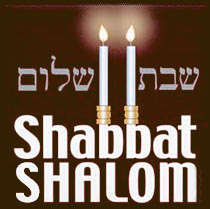Va'eira
The Parshah continues from where we left in Shemot, with Pharaoh increasing the slave labour and torture upon the Jews. Hashem then reassured Moshe that he will redeem the Jewish people out of Egypt, stating that he would lead the Jews out of Egyptian bondage, deliver the Jews out from different types of service, redeem the Jews out of Egypt without ransom and that he shall take the Jews out, as his people by giving them the Torah (Shemot 6:6/7).
The four statements of redemption in fact also parallel with the four cups of wine we drink at the Seder Table during Pesach while reciting the Hagaddah!
After the disgusting behaviour of the Egyptians, it was time for the Ten Plagues to begin.
Hashem instructed Moshe and his older brother, Aaron, to take the famous ‘staff’ (a stick that was made during first six days of creation (Pesachim 54a), and strike it over the River Nile, (which the Egyptians worshipped) and witness how the water would change to blood.
In fact it was Aaron who was told to strike over the river, as Moshe in fact owed a debt of gratitude to the river, as we saw in last week’s reading, it was the river which saved Moshe’s life, when Miriam gently placed him in a casket, and the river gently moved him towards Batya who pulled him out (Shemot 2:5), and therefore the river had actually saved his life. From this we learn the importance of how one should always show a debt of gratitude to an individual or group if they do them a favour, one should always try and repay the favour.
In fact we see later on in the book of Bamidbar, the male descendants of the nations ‘Moav’ and Ammon’ were not allowed to marry into the Jewish people, as they failed to greet the Jews with bread and water as they were coming out of the wilderness, thus failing to repay the debt of gratitude they owed the Jews when the Jewish forefather, Abraham, rescued Lot, the forefather of Moav during the war of the four kings against the five kings (Beresihit 14:16).
The second plague which was inflicted upon the Egyptians was the frogs, which covered the entire land of Egypt (Shemot 8:1).
The third plague was ‘Lice,’ which caused huge suffering and irritation to the Egyptians (Shemot 8:12). As soon as the plague of lice had begun, the Hebrews were freed from slave labour as there was no longer any clean earth available for building. For the first time, Pharaoh's sorcerers were forced to admit that Moshe and Aharon performed these wonders without magic and genuinely as agents of G-d. The magicians used demons to carry out their wishes, but demons have no power over creatures as little as lice (Gemara Sanhedrin 67b).
The first nine of the ten plagues could be divided into sets of three. The first two plagues of each group were preceded by a warning while the last plague from each set came unannounced.
The fourth plague of ‘Wild Beasts’ was preceded by a warning (Shemot 8:17). Once again Moshe told Pharaoh ‘let my people go!’ however after three weeks of warning, the Egyptian King’s heart was stubborn and he refused. In retribution, Wild Beasts flocked into Egypt, which consisted of snakes, sea monsters, lions, bears and insects. These animals trampled on everything and bit many Egyptians. Each of the plagues only affected the Egyptians and not the Jews, who resided in Goshen. In the land of Goshen a wild animal was not at all seen.
The fifth plague was a heavy pestilence (Shemot 9:3) which affected all animals in the land of Egypt that were left outside the stables, except for any animals owned by the Jews.
The sixth plague, the plague of ‘Boils’ was brought about by a partnership between Hashem, Moshe and Aharon. Moshe and Aharon threw ‘soot’ into the sky and Hashem converted it into leprous Boils which descended upon the Egyptians and their animals (Shemot 9:10). This plague brought physical suffering upon every Egyptian. The symptoms of this disease resembled a combination of 24 different forms of leprosy. The Egyptian magicians suffered the most from this plague, and most of them either died or never fully recovered. This was in punishment for all the acts of ‘sorcery’ and ‘black magic’ they had performed, which is forbidden by Torah law (Vayikra 19:31).
Pharaoh then begged Moshe and Aharon to pray to Hashem to have the plague terminated. However, once they had prayed and it ended, Pharaoh’s arrogance just continued and he failed to repent.
Pharaoh had in fact claimed that he was a G-d, which proved his arrogance. Three other men in the Tanach claimed to be G-d, they were, Chriam (a man who earlier in his life assisted King Solomon in building the first temple), Nebuchadnezzar and King Yoash (King from the line of Yehudah during the First Beit Hamikdash era).
The seventh plague was ‘hailstones,’ (Shemot 9:18) this plague proved that Hashem’s greatness would be acknowledged by all the Egyptians. The hailstones which were a combination of fire and water denied natural law, which in turn made the Egyptians admit that the cosmos was governed by divine assistance and not by natural law!
This week's natural Haftorah comes from chapter 28 in the book of ‘Yechezkel’ and teaches us a profound lesson in arrogance and self dependency.
This dvar torah is written in memory of Esther Bat David, who sadly passed away last year, may we do many good deeds in her memory.
Hope you all have a great Shabbat, Shabbat Shalom.

 Share on Twitter
Share on Twitter Visit our Facebook page
Visit our Facebook page